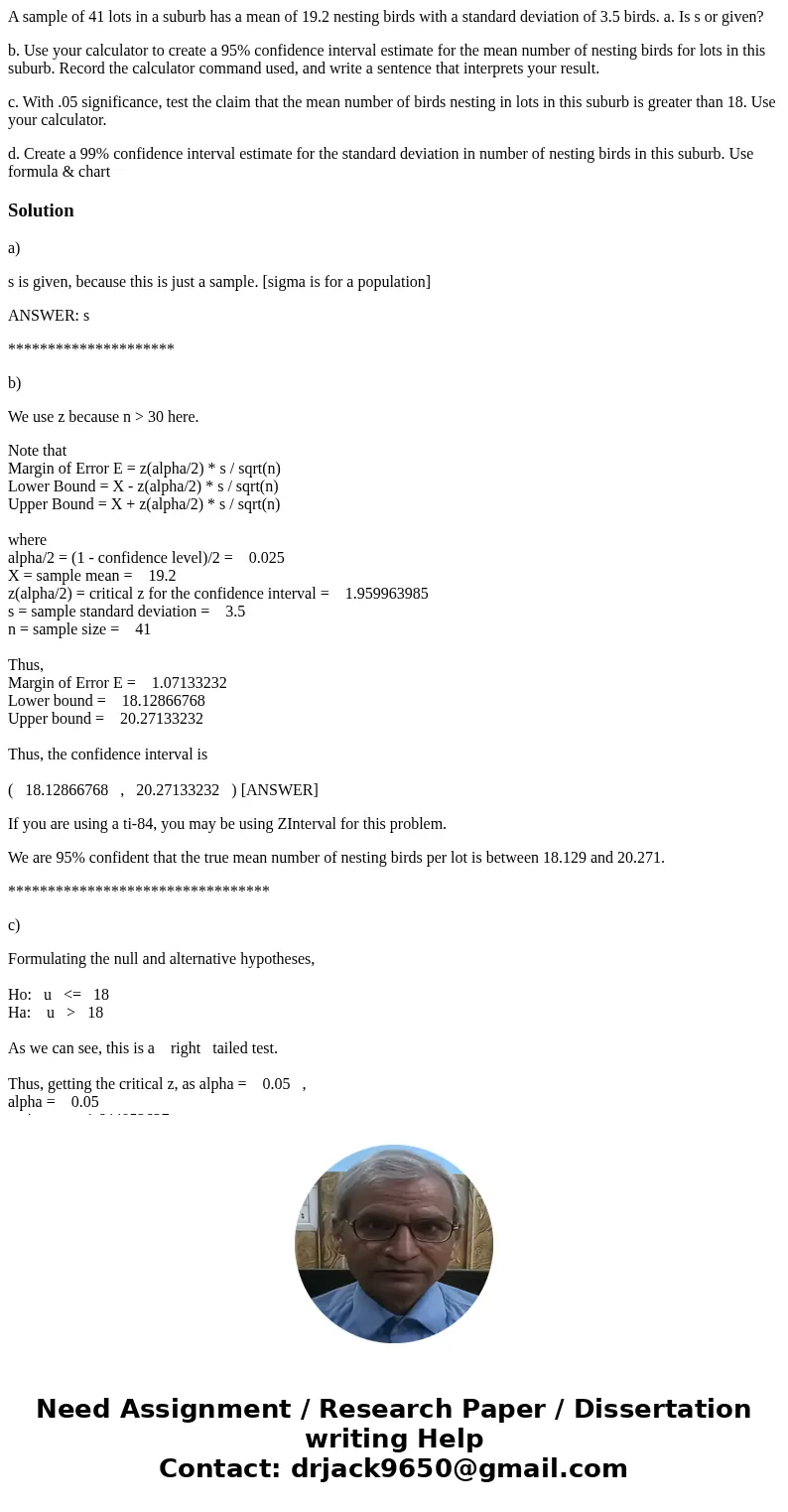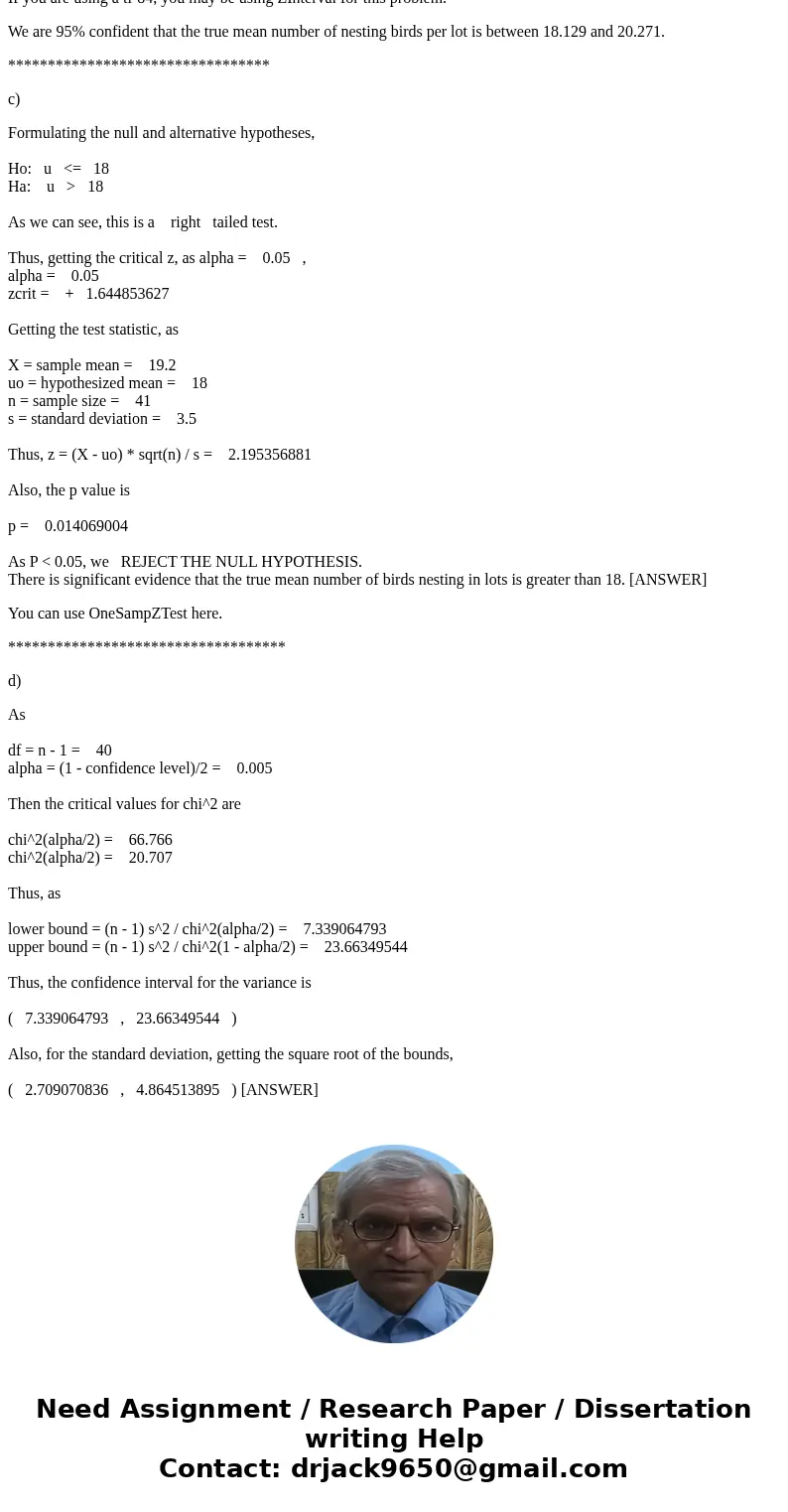A sample of 41 lots in a suburb has a mean of 192 nesting bi
A sample of 41 lots in a suburb has a mean of 19.2 nesting birds with a standard deviation of 3.5 birds. a. Is s or given?
b. Use your calculator to create a 95% confidence interval estimate for the mean number of nesting birds for lots in this suburb. Record the calculator command used, and write a sentence that interprets your result.
c. With .05 significance, test the claim that the mean number of birds nesting in lots in this suburb is greater than 18. Use your calculator.
d. Create a 99% confidence interval estimate for the standard deviation in number of nesting birds in this suburb. Use formula & chart
Solution
a)
s is given, because this is just a sample. [sigma is for a population]
ANSWER: s
*********************
b)
We use z because n > 30 here.
Note that
Margin of Error E = z(alpha/2) * s / sqrt(n)
Lower Bound = X - z(alpha/2) * s / sqrt(n)
Upper Bound = X + z(alpha/2) * s / sqrt(n)
where
alpha/2 = (1 - confidence level)/2 = 0.025
X = sample mean = 19.2
z(alpha/2) = critical z for the confidence interval = 1.959963985
s = sample standard deviation = 3.5
n = sample size = 41
Thus,
Margin of Error E = 1.07133232
Lower bound = 18.12866768
Upper bound = 20.27133232
Thus, the confidence interval is
( 18.12866768 , 20.27133232 ) [ANSWER]
If you are using a ti-84, you may be using ZInterval for this problem.
We are 95% confident that the true mean number of nesting birds per lot is between 18.129 and 20.271.
*********************************
c)
Formulating the null and alternative hypotheses,
Ho: u <= 18
Ha: u > 18
As we can see, this is a right tailed test.
Thus, getting the critical z, as alpha = 0.05 ,
alpha = 0.05
zcrit = + 1.644853627
Getting the test statistic, as
X = sample mean = 19.2
uo = hypothesized mean = 18
n = sample size = 41
s = standard deviation = 3.5
Thus, z = (X - uo) * sqrt(n) / s = 2.195356881
Also, the p value is
p = 0.014069004
As P < 0.05, we REJECT THE NULL HYPOTHESIS.
There is significant evidence that the true mean number of birds nesting in lots is greater than 18. [ANSWER]
You can use OneSampZTest here.
***********************************
d)
As
df = n - 1 = 40
alpha = (1 - confidence level)/2 = 0.005
Then the critical values for chi^2 are
chi^2(alpha/2) = 66.766
chi^2(alpha/2) = 20.707
Thus, as
lower bound = (n - 1) s^2 / chi^2(alpha/2) = 7.339064793
upper bound = (n - 1) s^2 / chi^2(1 - alpha/2) = 23.66349544
Thus, the confidence interval for the variance is
( 7.339064793 , 23.66349544 )
Also, for the standard deviation, getting the square root of the bounds,
( 2.709070836 , 4.864513895 ) [ANSWER]


 Homework Sourse
Homework Sourse